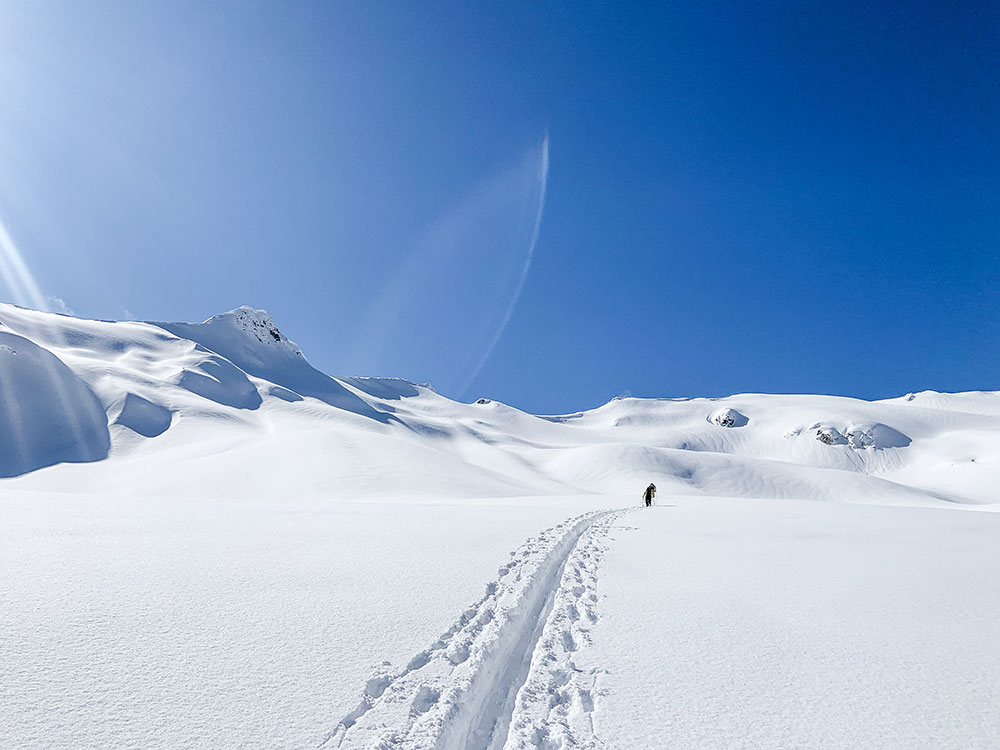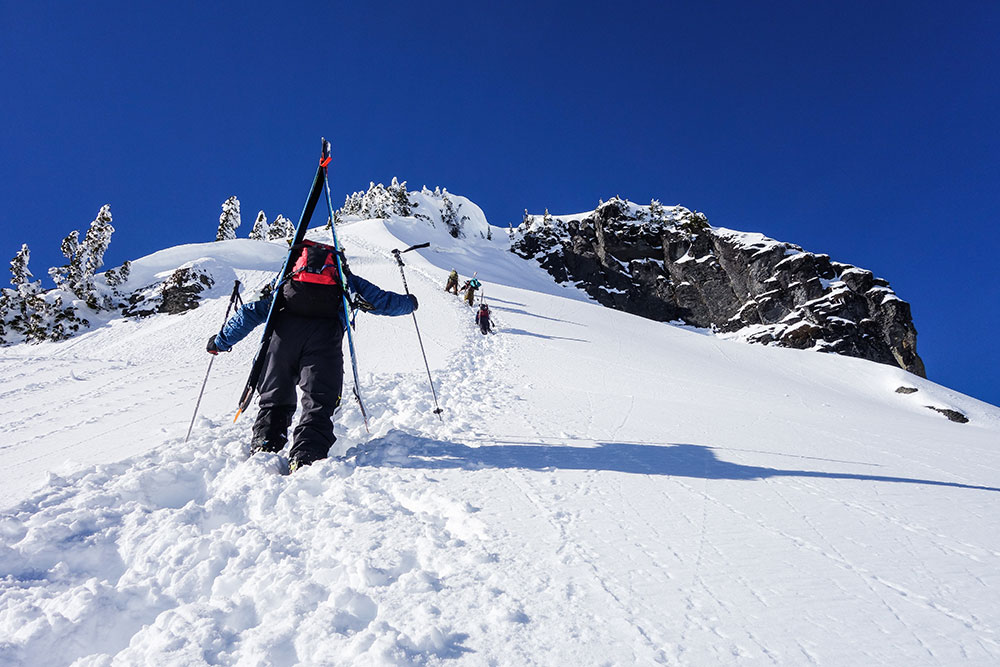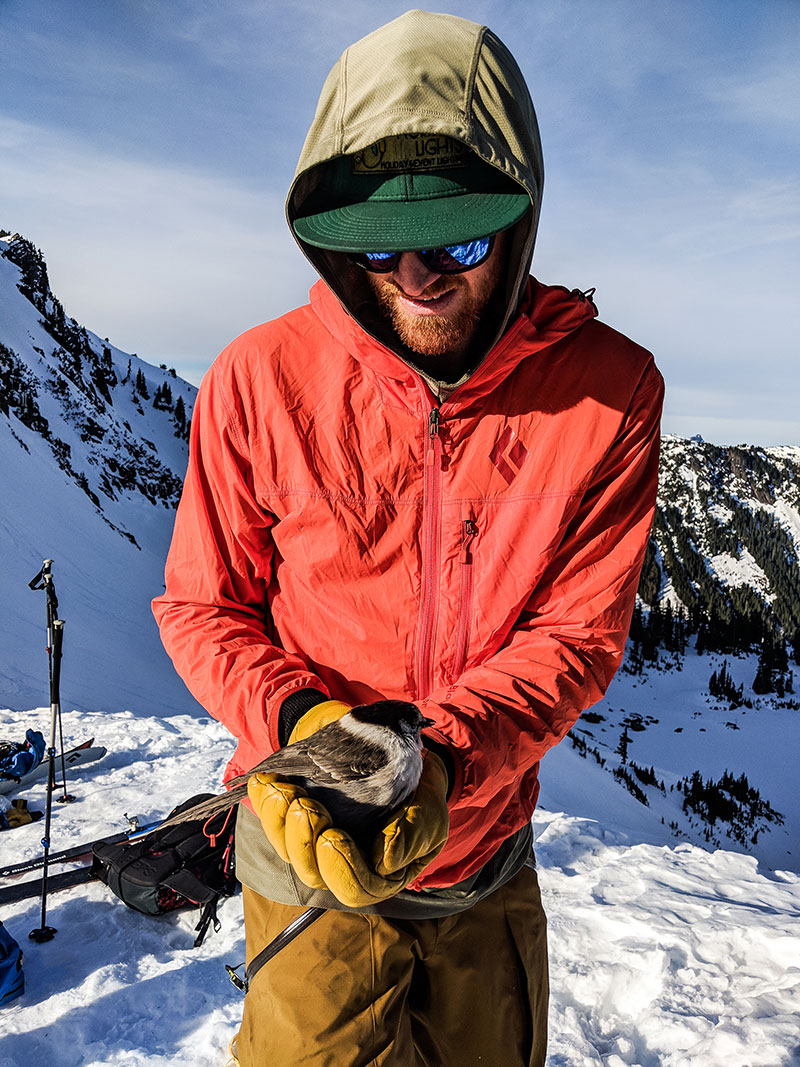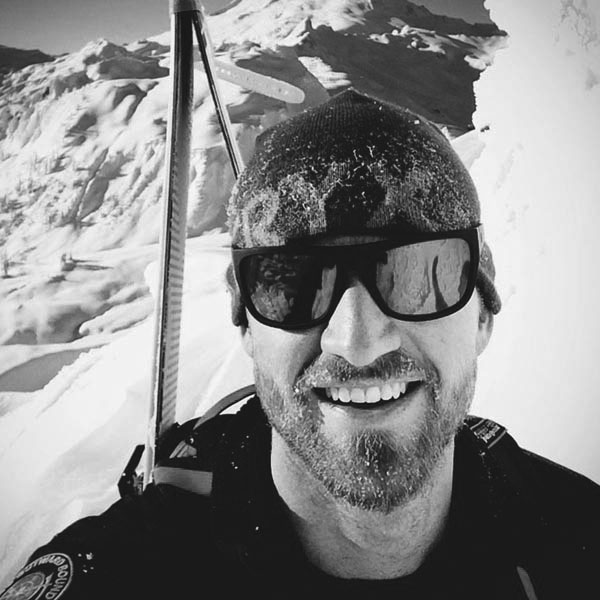The 10 Commandments of Winter Backcountry Trail Etiquette
Say you’re going up an established skin track and a group of bandit snow-shoers are descending upon you like an unruly pack of cackling cayotes clutching White Claws. Who has the right of way? How can you engage with other backcountry users in a respectful way that benefits everyone? This guide provides travelers with 10 rules of backcountry trail etiquette in the winter so you can make respectful and responsible decisions.
Skin Track vs Boot Pack
“1. Thou Shalt Not Walk in the Skin Track.”
This is one of the most commonly broken rules in the backcountry during the winter. There’s not much more frustrating as a skier or splitboarder than having a beautifully sculpted skin track plunge stepped out by someone post-holing — especially in snowshoes. Yes, it’s easier to walk in the skin track than break your own trail, but the person that created the skin track worked hard to make that track and someone walking in it destroys that work. Instead, break your own trail!
Putting In The Track
“2. Thou Shalt Not Create a Track That is Dangerous or Dumb.”
Up tracks should be put in a place that is out of avalanche terrain. Exceptions to this being when you’re climbing a steep couloir or other objectives that you’ve hopefully evaluated carefully. For skiers and riders, don’t make the skin track too steep. Doing so forces those behind you to create their own track — eating up more of the precious pow you hope to ride. Also, the track should ideally not go up the gut of the down track, or run you plan to ski/ride.

Use Established Trails
“3. Thou Shalt Use the Existing Track Unless it is Dangerous or Dumb.”
It’s common and desirable for skiers and riders to utilize the same skin track multiple times in a day. If a skin track is destroyed by post-holing or folks riding over it, then the skiers and riders must create a new skin track. In crowded multi-use zones like the Baker Backcountry going up to Artist Point, it’s common to see a dozen different tracks going across a slope. In a perfect world, there should be three tracks in areas like this: A skin track, an up-track for booting/snowshoes, and a down-track for booting/snowshoes. Use the existing track unless it conflicts with the two previous rules.
Right of Way
“4. Thou Shalt Yield to Uphill Travelers.”
Uphill has the right of way. Stand aside for those coming up the track so they don’t lose their momentum. Of course, some folks will decide to take a break and love to use folks coming down as an excuse to take a breather. Great, but make the assumption that folks want to keep walking up, step to the side, and communicate.

Be Nice
“5. Thou Shalt Play Well With Others.”
An often overlooked part of Leave No Trace is: Respect Other Users. The backcountry is increasingly a crowded place in the winter. Snowmobiles, climbers, hikers, and backcountry skiers/riders might all be using the same terrain for different purposes. No one has more of a right to the land than anybody else. So be nice. If folks are breaking the above rules, don’t freak out on them, they likely just don’t know. Instead, take the time to ask them how their day is going, build a little rapport, then, if it feels right, educate them politely.
Dogs In The Backcountry
“6. Thou Shalt Use a Leash”
Unless you are in a designated leash off zone, keep your canine companion leashed at all times. You may love your dog, but don’t assume everyone does. In addition, any wildlife you’d encounter definitely won’t like your dog and the added stress it provides.
Waste In The Backcountry
“7. Thou Shalt Pick Up Poop and Trash”
No one likes coming across poop when they’re outside trying to get away from the poop in their everyday life. Pick it up, bag it, and pack it out if it’s yours or your canine companion. The same goes for garbage like candy wrappers.
Trail Closures
“8. Thou Shalt Respect Trail Closures”
If a trail or area is closed, respect the closure. In the winter, the Department of Transportation, ski patrol at ski areas, and mechanized backcountry skiing/riding operations routinely close areas for avalanche mitigation or put up barriers to keep you out of hazardous terrain. Don’t get caught in a slide because you ducked a rope.
Wildlife
“9. Thou Shalt Not Feed The Wildlife”
As cute as they are, and as cool as the picture would be, don’t feed the animals. Animals have their own survival methods in the winter evolved over thousands of years. They don’t need you to feed them your raisins, in fact, you might just be killing them by doing so. If animals learn that humans are a food source, they will abandon their normal foraging behaviors for the easier handouts humans provide. Once an animal is dependent on humans for food, they get increasingly aggressive towards humans. Respect wildlife by keeping your distance.

Emergencies
“10. Thou Shalt Help In An Emergency”
If you witness an avalanche or medical emergency in the backcountry, provide aid as long as it is safe for you to do so. If responding to an avalanche burial, this means paying attention to hang fire or parts of the slope that could still slide. Don’t become a victim yourself. Even if you don’t have a bunch of knowledge, offer to help and ask what you can do.
Want to learn more? Check out our Ultimate Guide to Backcountry Skiing.
